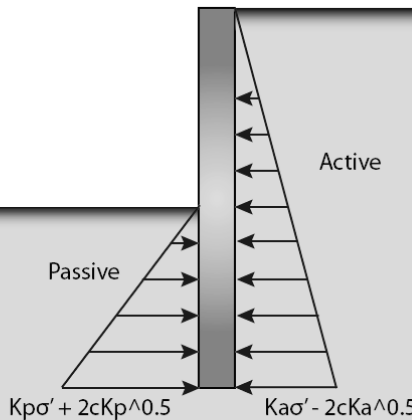Introduction Of Lateral Earth Pressure
Lateral earth pressure is the pressure that soil exerts horizontally. It is important because it affects the strength and behavior of the soil, and it is considered in the design of structures like retaining walls, basements, tunnels, deep foundations, and braced excavations. Lateral earth pressure can cause a retaining wall to overturn.

Coefficient Of Lateral Earth Pressure
The coefficient of lateral earth pressure is a dimensionless number that represents the ratio of the lateral soil pressure to the vertical soil pressure acting on a retaining wall or similar structure. It is used to calculate the lateral force that must be resisted by the retaining wall in order to maintain stability. The value of the coefficient depends on the angle of internal friction of the soil and the stress conditions within the soil mass, as well as the orientation and shape of the wall and the properties of the soil. The coefficient can be determined through various methods, including empirical relationships and analytical or numerical analysis. It is an important factor in the design of retaining walls and other earth-retaining structures, as it helps to ensure that the wall has sufficient strength and stability to withstand the lateral forces acting on it.
The coefficient of lateral earth pressure, denoted by the symbol “K”, can be calculated using the following formula:
K = (tan(φ) – sin(φ)) / (tan(φ) + sin(φ))
Where “φ” represents the angle of internal friction of the soil.
This formula is known as the Rankine active earth pressure equation, and it is widely used to determine the lateral earth pressure acting on a retaining wall. The value of K can range from 0 to 1, depending on the properties of the soil and the stress conditions within the soil mass. A value of K close to 0 indicates that the lateral soil pressure is low, while a value of K close to 1 indicates that the lateral soil pressure is high. The value of K is typically used in conjunction with other design parameters, such as the height and width of the retaining wall and the soil properties, to calculate the lateral force that must be resisted by the wall in order to maintain stability.
